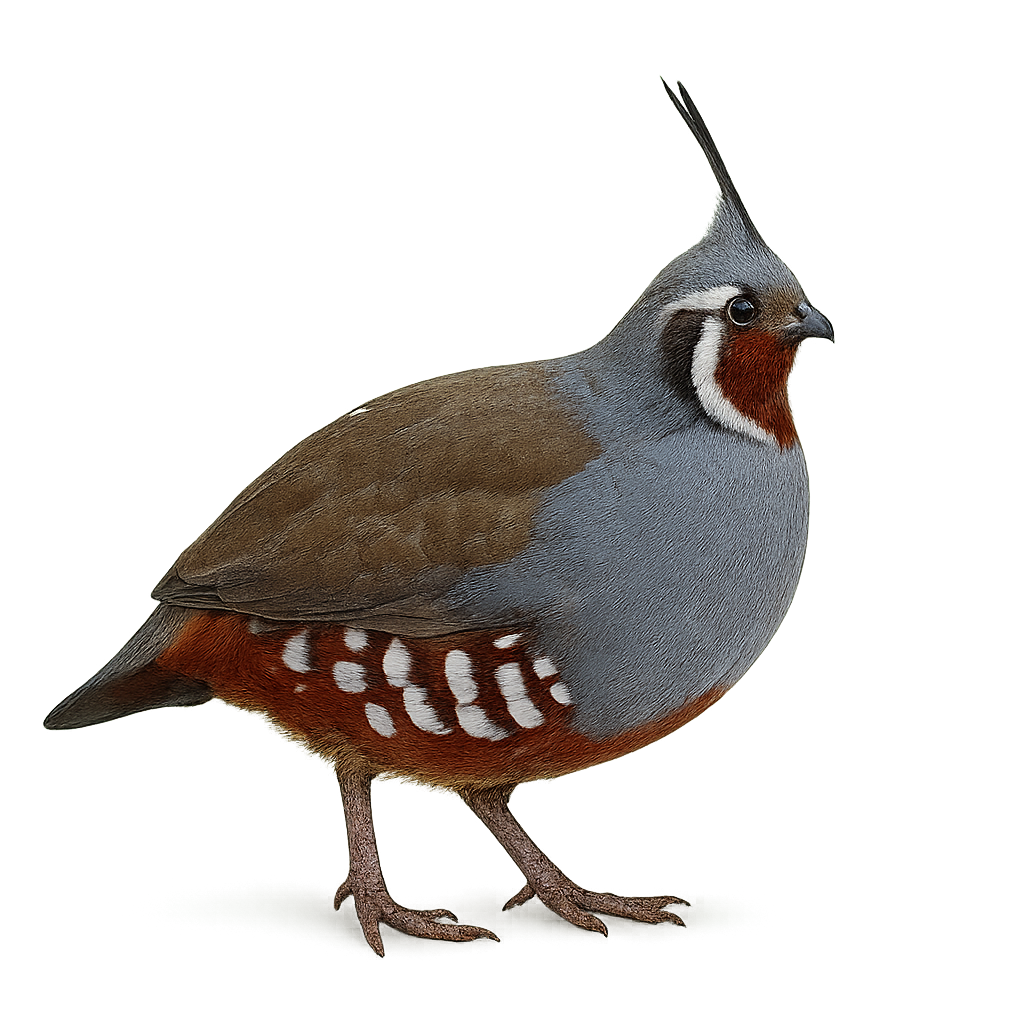Your wildlife photography guide.
Explore the mountain quail in detail, study its behavior, prepare your shots.
Where to observe and photograph the mountain quail in the wild
Learn where and when to spot the mountain quail in the wild, how to identify the species based on distinctive features, and what natural environments it inhabits. The WildlifePhotographer app offers tailored photography tips that reflect the mountain quail’s behavior, helping you capture better wildlife images. Explore the full species profile for key information including description, habitat, active periods, and approach techniques.
Mountain Quail
Scientific name: Oreortyx pictus

IUCN Status: Least Concern
Family: ODONTOPHORIDAE
Group: Birds
Sensitivity to human approach: Suspicious
Minimum approach distance: 10 m
Courtship display: April to June
Incubation: 21-23 jours
Hatchings: May to July
Habitat:
Coniferous forests, shrublands, mountain meadows
Activity period :
Primarily active during the day, with peak activity in the morning and late afternoon.
Identification and description:
The Mountain Quail, or Oreortyx pictus, is a medium-sized ground-dwelling bird distinguished by its prominent crest and varied plumage of brown, gray, and white hues. It is primarily endemic to the mountainous regions of the western United States, where it inhabits coniferous forests and shrublands. This bird is particularly adapted to rugged terrains and primarily feeds on seeds, berries, and insects. Although capable of flight, it generally prefers to run to evade predators. The Mountain Quail is known for its elusive nature and shy behavior, making it difficult to observe in its natural habitat.
Recommended lens:
400mm – adjust based on distance, desired framing (portrait or habitat), and approach conditions.
Photography tips:
To photograph the Mountain Quail, it is advisable to use a telephoto lens of at least 400mm to capture detailed images without disturbing the bird. Look for areas where the bird is likely to feed, such as clearings or forest edges. Be patient and discreet, as this bird is suspicious and can easily be startled. Use a tripod to stabilize your camera and wait for the bird to feel comfortable in its environment to get natural and authentic shots.
The WildlifePhotographer App is coming soon!
Be the first to explore the best nature spots, track rutting seasons, log your observations, and observe more wildlife.
Already 1 432 wildlife lovers subscribed worldwide

